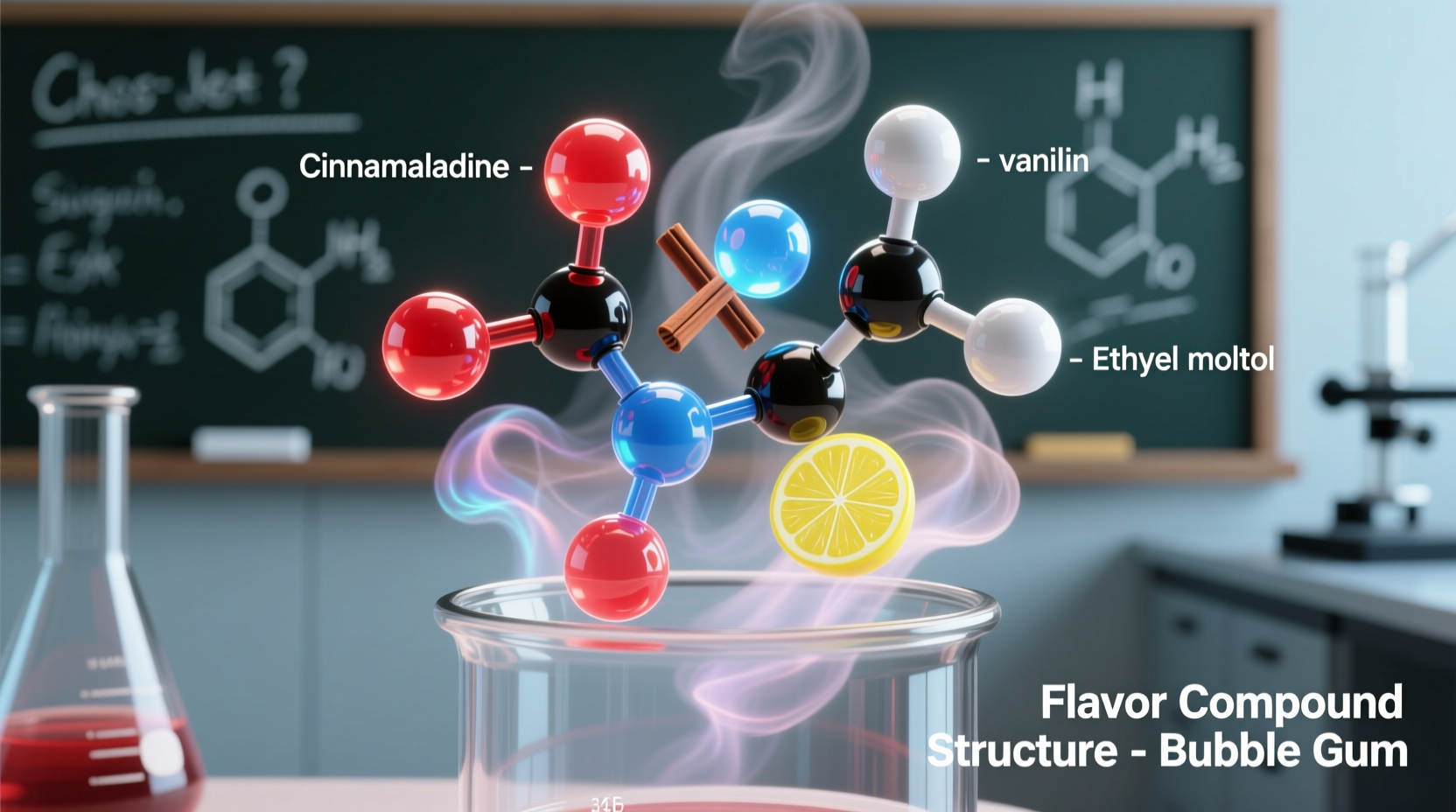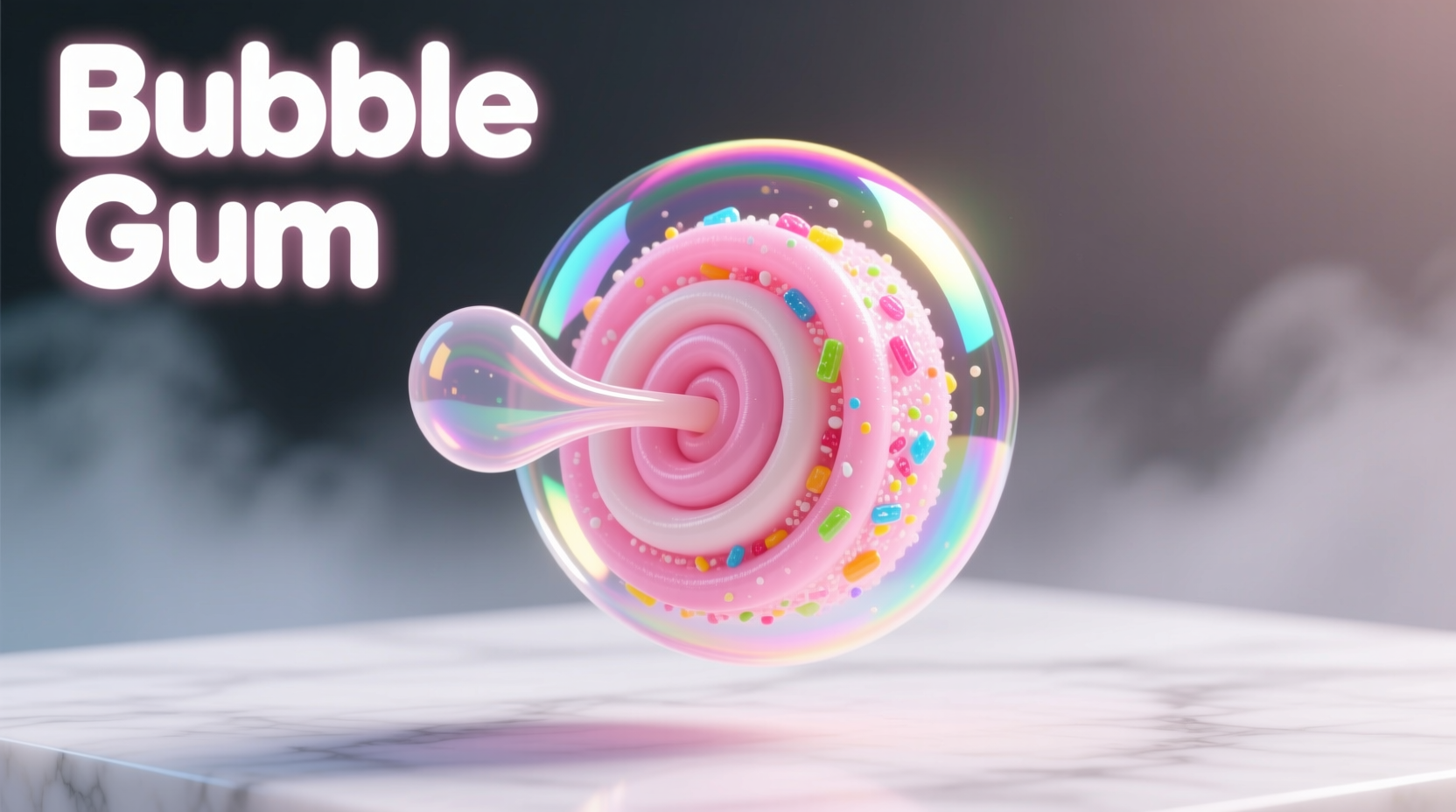Have you ever wondered why bubble gum has that unmistakable sweet, fruity taste that seems different from any actual fruit? You're not alone. For decades, this artificial flavor has captivated chewers worldwide with its unique profile that defies natural categorization. Understanding what makes bubble gum taste the way it does reveals fascinating science behind one of the most recognizable flavors in confectionery history.
The Chemistry Behind Bubble Gum's Signature Taste
Bubble gum flavor isn't modeled after a specific fruit but rather an engineered combination of artificial flavor compounds. Food chemists primarily use ester compounds to create this distinctive taste. These organic compounds produce fruity aromas when combined in precise ratios:
- ethyl methyl phenyl glycidate (EMPG) - provides the characteristic "bubblegum" note
- ethyl butyrate - contributes pineapple-like sweetness
- methyl anthranilate - adds grape-like undertones
- isoamyl acetate - delivers banana-like notes
According to research published in the Journal of Agricultural and Food Chemistry, these esters work synergistically to create a flavor profile that's greater than the sum of its parts. The precise formulation remains proprietary to major gum manufacturers, but the scientific principle behind this artificial creation is well-documented in food chemistry literature.

How Bubble Gum Flavor Differs From Regular Chewing Gum
Many people confuse bubble gum with regular chewing gum, but their flavor profiles serve different purposes. This comparison reveals why bubble gum stands apart:
| Characteristic | Bubble Gum | Regular Chewing Gum |
|---|---|---|
| Primary Flavor Goal | Distinctive artificial "fun" flavor | Realistic fruit or mint replication |
| Color Association | Almost always pink | Varies by flavor (yellow for lemon, green for mint) |
| Flavor Complexity | Multi-fruit blend creating unique profile | Single-note or simpler combinations |
| Chemical Composition | Higher concentration of ester compounds | More natural flavor extracts |
The Evolution of Bubble Gum Flavor: A Historical Timeline
Bubble gum's distinctive flavor didn't emerge overnight. Its development reflects changing consumer preferences and technological advances in food chemistry:
- 1928 - Walter Diemer creates the first commercially successful bubble gum (Dubble Bubble) with a simple saccharin-sweetened formula and basic fruit flavoring
- 1940s-1950s - Post-WWII sugar rationing ends, allowing for sweeter formulations with more complex flavor profiles
- 1960s - Food chemists begin using ester compounds to create the now-familiar bubble gum flavor
- 1970s - The iconic pink color becomes standardized, reinforcing the association between color and flavor
- 1990s-Present - Manufacturers refine the formula while maintaining the recognizable profile that consumers expect
According to the Smithsonian National Museum of American History, the standardization of bubble gum flavor became crucial when competing manufacturers needed to create products that tasted familiar to consumers accustomed to established brands.
Why Bubble Gum Doesn't Taste Like Any Real Fruit
One of the most intriguing aspects of bubble gum flavor is that it doesn't correspond to any single fruit in nature. This intentional design serves several purposes:
- Brand recognition - Creates a unique flavor identity that consumers associate specifically with bubble gum
- Manufacturing consistency - Artificial flavors provide more consistent taste than natural fruit extracts which vary by season and source
- Sensory experience - The multi-fruit profile creates a more complex, interesting taste experience
- Longevity - Artificial esters maintain their flavor longer in the gum base than natural fruit flavors would
Food scientists deliberately engineered this flavor to be uniquely artificial—a taste experience that exists solely in the realm of confectionery. This strategic decision has proven remarkably successful, with the bubble gum flavor profile remaining largely unchanged for over half a century despite evolving food trends.
Common Misconceptions About Bubble Gum Flavor
Several myths persist about bubble gum's flavor origins. Let's clarify the most common misunderstandings:
- Myth: Bubble gum flavor is based on strawberry or cherry
Reality: While early formulations used these fruits, modern bubble gum flavor is a complex artificial blend unrelated to specific fruits - Myth: The pink color determines the flavor
Reality: The color was originally accidental (the only food coloring available), but now reinforces flavor expectations through psychological association - Myth: Bubble gum flavor has changed significantly over time Reality: Manufacturers have carefully maintained the core flavor profile while making minor adjustments for safety and quality
Practical Applications of Bubble Gum Flavor Knowledge
Understanding bubble gum's unique flavor profile has several practical applications beyond satisfying curiosity:
- Culinary creativity - Chefs use bubble gum flavoring in dessert creations for nostalgic appeal
- Food science education - It serves as an excellent case study for teaching about artificial flavors and ester chemistry
- Sensory marketing - Businesses leverage the strong psychological associations with this flavor
- Allergy considerations - Those with sensitivities to certain esters can make informed choices
For home experimentation, food science educator Antonio Rodriguez notes: "The distinctive bubble gum flavor can be recreated using commercially available flavor extracts. Just remember that the magic happens in the precise ratio of components—too much of one ester and you lose that special bubble gum character."
Where Bubble Gum Flavor Fits in Modern Confectionery
Despite the growing popularity of natural ingredients, bubble gum flavor remains remarkably resilient. Market research from the Center for Science in the Public Interest shows that consumers continue to prefer the traditional artificial bubble gum flavor over natural alternatives. This preference demonstrates how strongly psychological associations can influence taste perception.
Modern manufacturers face the challenge of maintaining this beloved flavor while addressing consumer concerns about artificial ingredients. Some have developed "clean label" versions using fruit juice concentrates and natural flavorings, though taste tests consistently show these alternatives fail to capture the authentic bubble gum experience that consumers expect.











 浙公网安备
33010002000092号
浙公网安备
33010002000092号 浙B2-20120091-4
浙B2-20120091-4